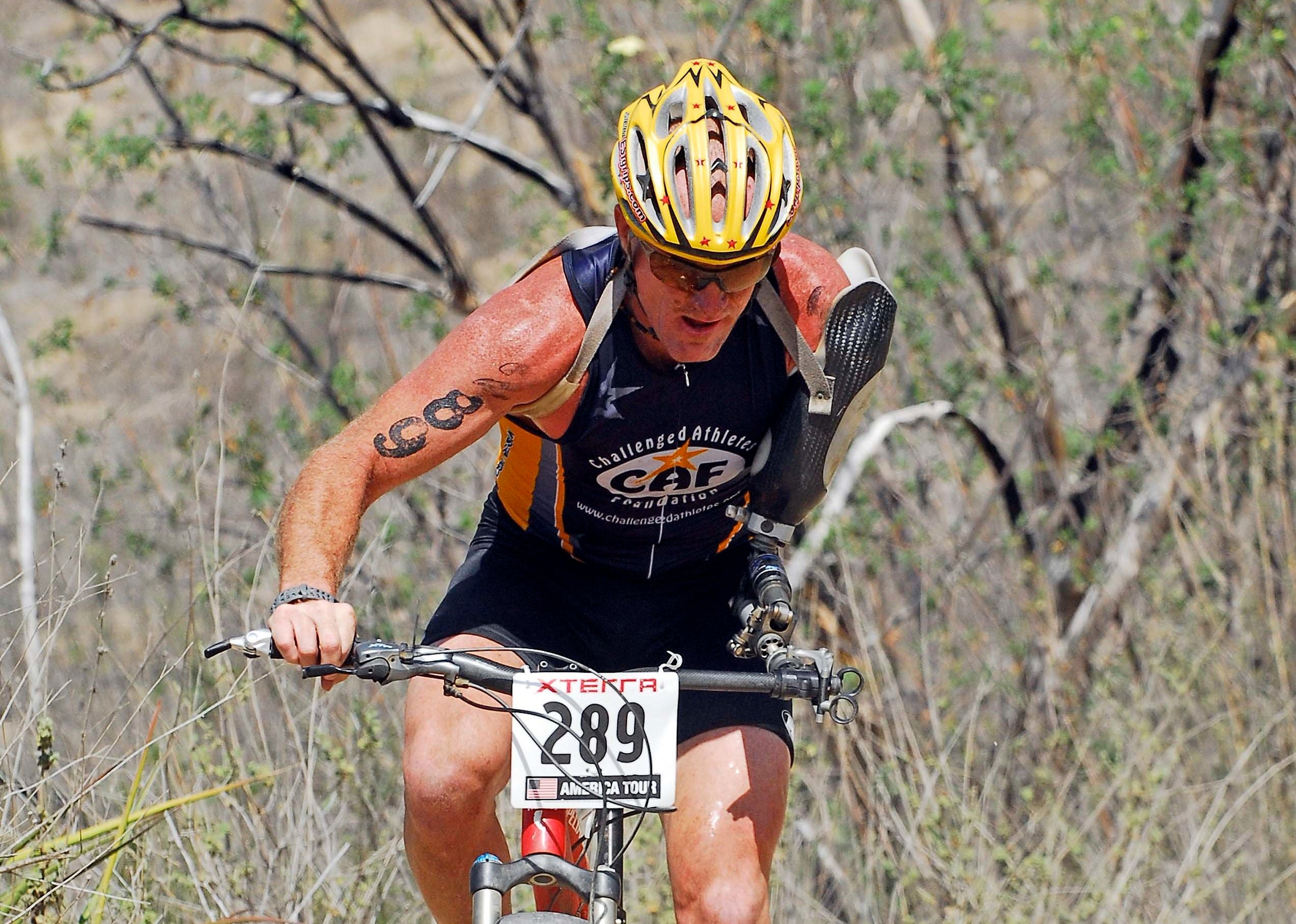Challenged Athletes Set To Escape From Alcatraz

Willie Stewart. Photo: CAF/Rich Cruse
The Escape from Alcatraz Triathlon, being held this Sunday, June 10 in San Francisco, is notorious for being one of the hardest triathlons in the United States. For Willie Stewart and Mohamed Lahna, it’s not just a chance test their mettle against 2,000 other triathletes – it’s an opportunity to redefine the word “impossible.” Both athletes will be racing this weekend as members of the Challenged Athletes Foundation (CAF) Team, an organization helping athletes with physical disabilities pursue active lifestyles.
“I think all racers are inspiring,” says Stewart, “but on the other hand, many folks with disabilities to overcome tend to be even more empowering to me.”
Stewart, a former standout athlete in high school, lost his arm during a gruesome construction accident. Though many considered his athletic career to be over, less than two years later Stewart was playing rugby, cross-country skiing and finishing marathons and triathlons. Sunday will be his thirteenth time participating in Escape from Alcatraz.
Mohamed Lahna was born with a congenital limb deficiency, resulting in a right femur that did not form properly. With a prosthetic limb, Lahna has competed in several endurance events, including Ironman triathlons and a 20-kilometer swim across the Gibraltar Strait. He will be participating in Escape from Alcatraz for the first time this weekend, as the swimmer in a team with fellow CAF members Alan Shenken and Geoff Turner.
“Racing with a disability is a challenge in that you have to be creative on making adaptations to the sport so that it works for your unique condition,” says Lahna. “I have to customize my wetsuit to fit my right leg that is missing a femur.”
Lahna also has prosthetic legs that are tailored to accommodate his size and are easy to change quickly during the bike to run transition of each triathlon.
These accommodations are often made possible through the help of the Challenged Athletes Foundation. The organization not only mentors athletes with disabilities; it also provides grants to fund adaptive equipment and hosts clinics to assist athletes in building the skills needed to succeed in sports like swimming, running and handcycling.
Stewart, who has been with CAF for 15 years, emphatically states the organization has changed his life for the better, and assists thousands of people each year with leading better lives. Lahna, who first joined CAF in 2009, agrees:
“This organization has been great at helping connect me with other challenged athletes and learning from their experiences. We may have unique obstacles to overcome, but we are still trying to improve as athletes and the sport in general. CAF is a wonderful organization that supports people with disabilities to be active.”
Though many assume racing with a disability poses an enormous set of challenges, Stewart and Lahna are quick to downplay their situations.
“The hardest part for me now,” says Stewart, “is my age.”
As for Lahna, he’ll happily brag about his biggest challenge: “My wife just gave birth on Sunday, so we’ve been a little busy taking care of our newborn!”
For more information on the Challenged Athletes Foundation, visit Challengedathletes.org.